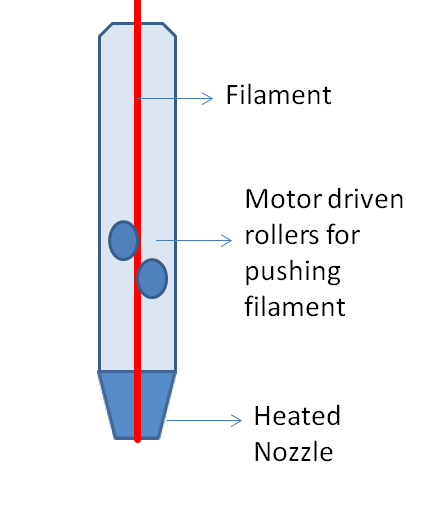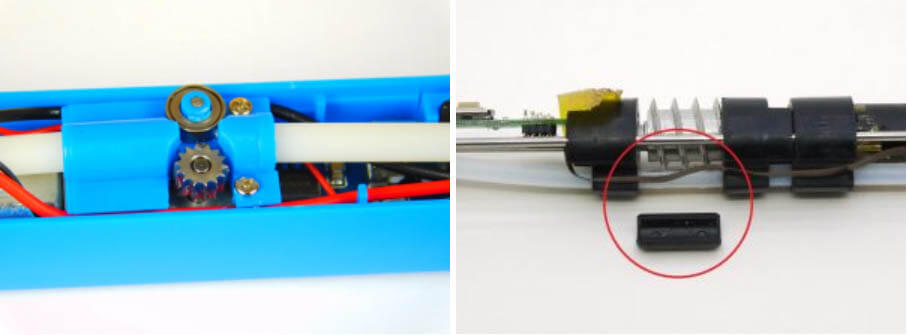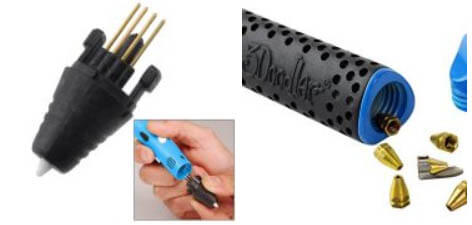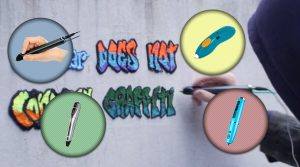Most 3D pens on the market today are based on the same technology that most 3D printers use, and that the first 3D pen (inspired by a 3D printer) used. This techniques has many fancy names like FDM (Fused deposition modeling) or FFF (fused filament fabrication) or PJS (Plastic Jet Printing) but they all mean the same thing.
The general schema for all such pens is somewhat like this:
And they work by:
- taking in plastic (may kinds but the most popular are PLA plastic which starts to melt at about 190°C/374°F and ABS plastic which starts to melt at 225°C/437°F), in forms of filaments or short rods, either 1.75 mm or 3 mm in diameter (at least one pen works with plastic strips from PET bottler instead but it’s the same principle):
2. pulling in the plastic and pushing it towards a heated nozzle – this can be done using a sharp tooth gear and a roller (first pic below), or a worm drive mechanism, twisting the filament in the process (this is how 3Doodler Create and LIX pens work – you can see part of this one in the second pic):
3. melting and extruding the plastic through the heated nozzle, which can be made of either metal or ceramic (intuition says that metal nozzles would call the plastic faster allowing for better drawing experience, while ceramic ones would make it harder for you to get burnt if you accidentally touch it – but in practice the material of the nozzle tip does not seem to make any difference…). A few pens also come with multiple sizes replaceable nozzles.
There are lots of tiny details that make each pen unique. Although the general plan is the same, small differences in its components can make or break a pen. Does it last long? Does it heat up fast? Does it get clogged often? How easy it is to unclog it? etc. These are all governed by small details in each of the components performing the functions outlined above… The devil is truly in the details!
Now that you have a grip on the general mechanism behind this pens, it’s best to check out some actual products. We suggest you start with these models:







